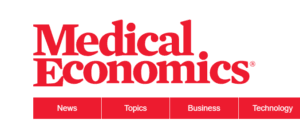The demand for ancillary services by independent physicians has never been higher. In the 2018 Medical Economics Physician Report, among all non-surgical primary care survey respondents, 84 percent said they provide ancillary services.
The number of ancillary options for practices has grown substantially in recent years. As an independent medical representative, it can be difficult to know which programs to focus your energy on.
We spoke with some of the top experts in medical ancillaries to get their opinions on which ancillaries they are most excited about this year.
10 – Billing
While medical billing may not be the most exciting ancillary program, it should be in the portfolio for any reps promoting equipment or services that involve a billing component. Some practices are hesitant to move forward with what you are selling due to uncertainty about their ability to get paid. Having a trusted billing partner can not only help you close more sales, but you can often earn an entire practice’s billing, which is a generous, residual income.
9 – Diabetic Neuropathy
Podiatrists frequently utilize ancillary services. The Diabetic Neuropathy Device (DND) is a must-have for any podiatrist. A 2 minute test can accurately assess for small-fiber neuropathy, replacing outdated techniques. The device has a billable code and is a consistent source of revenue to the practice.
8 – Fingerstick Toxicology
While urine is the most common urine drug screening method, healthcare providers have a new option to streamline the process of specimen collection while yielding a more accurate diagnosis. With the emergence of fingerstick DBS testing, many practices will switch from traditional urine. This will give reps who have this product a supreme advantage over labs that only offer urine, and they will siphon off a lot of business.
7 – Remote Patient Monitoring (RPM)
Every day, thousands of smart phone users become eligible for Medicare. The smart phone has enabled the connection of numerous devices to an app helping physicians monitor patient health. The Remote Patient Monitoring (RPM) program from CMS now allows physicians to utilize alternate clinical staff to provide the services that qualify for RPM.
6 – Molecular PCR
The most exciting innovations in the laboratory business are in the molecular sector. CGX and PGX testing have been popular tests to promote, but inconsistent insurance coverage has led many reps to throw in the towel. However, molecular PCR pathogen testing is showing promise to be a consistent payor, with wide clinical applications. Doctors can now run panels for respiratory, GI, urinary, wound, and nail pathogens, coupled with an antibiotic-resistance panel….all in 1-2 days!
5 – Fingerstick Allergy & Immunotherapy
Allergy companies have struggled to find a consistent model that works for most clinics. High up-front costs, patient minimums, extra staff, occupying exam room, and lots of needles for patients! The same fingerstick DBS card that is used for fingerstick toxicology can also identify 120 food and airborne allergies. Coupled with a flat-rate immunotherapy kit that offers both shots and sublingual drops, the clinic can earn revenue without any extra staff, space, or long-term contracts.
4 – Retail Pharmacy
While pharmacy is an obvious profit center in healthcare, few private practices participate due to the high cost and complexity. Not to mention, certain States restrict doctor participation. However, for a large practice in a State that permits, Retail Pharmacy is a serious revenue generator for both clinics and reps.
3 – Osteoarthritis Treatment Protocol
Osteoarthritis affects tens of millions of Americans, and primary care practices are increasingly interested in non-surgical alternatives with reimbursable codes. This protocol gives doctors a turnkey treatment that becomes a serous profit center. Reps routinely make $25k+ as an up front bonus.
2 – Wound Care
Non-healing wounds have always been difficult to treat, leading most providers to refer these cases out. Regenerative products are showing great promise in dramatically reducing healing time. As a result, insurance providers and CMS are increasingly providing coverage for regenerative wound care treatments. With amputations on the rise, this is an easy conversation to have with providers. Reps like the fast, consistent pay.
1 – Diabetes Diagnostic and Treatment Protocol
This program has EVERYTHING! Huge account setup bonus plus 8-10 add-on programs for high residual pay.
Clinics are being incentivized to offer services that seek to reduce chronic conditions like diabetes. This is stratified through the MIPS scoring system. This program meets 7 Quality Use Measures, generates over $5k/patient/year, payable by all payors. Clinics will participate in a program promoted by the CDC and CMS.
To find out more information on any of these medical ancillary programs, visit everyancillary.com

